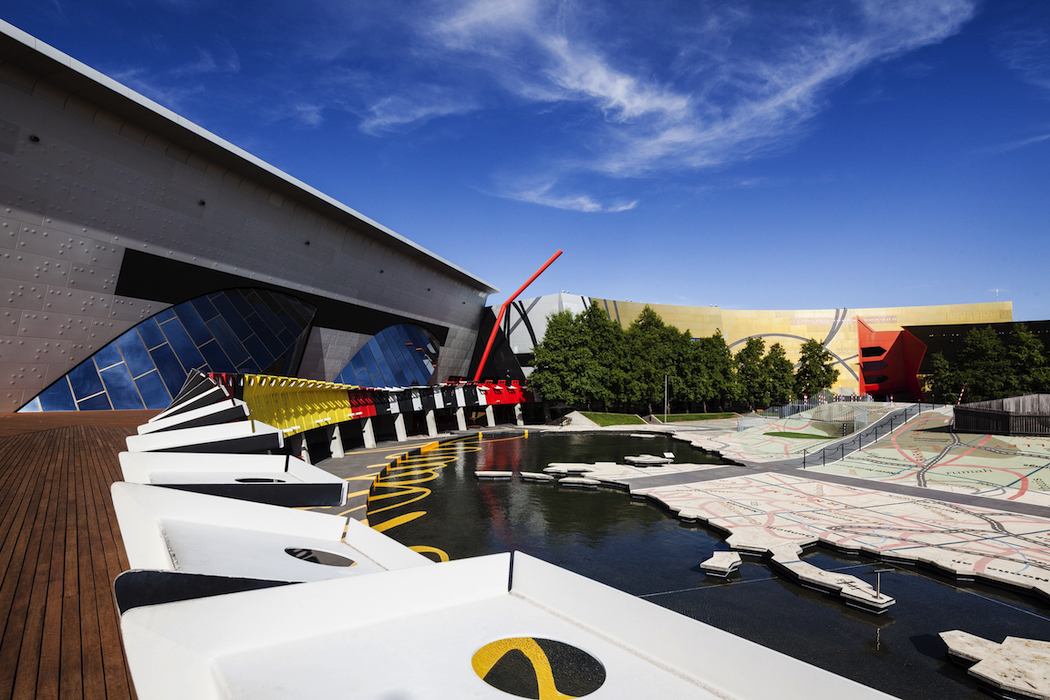
Canberra: the heart of the nation. You feel it in the poignancy of a wreath being laid at the Australian War Memorial to honour Australians who made the ultimate sacrifice. You feel it in the halls of Parliament House where every aspect of the building’s design is loaded with meaning for all who walk this land.
You feel it in the National Gallery of Australia where the nation’s largest exhibition space for First Nations art honours the world’s oldest continuous living culture. And you can feel it in the National Museum of Australia where the Garden of Australian Dreams spells out the word ‘home’ in 100 languages.
There was a time, back in the ‘80s, when ‘Heart of the Nation’ was a slogan on car registration plates in the Australian Capital Territory. It was resurrected for number plates in the early 2000s before being abandoned when it failed to win the endorsement of many Canberra residents, for reasons we can only speculate about.
Yet the slogan, it would seem, is no idle boast. Some tremendous experiences await that may persuade you that Canberra is indeed a window into the nation’s soul.
Cultural Attractions of Australia
Cultural Attractions of Australia represents four Canberra attractions that offer curated experiences for visitors who want to experience the national capital differently. This Australia-wide industry-led collective brings together 17 leading cultural attractions, including galleries, museums, historic sites, performing arts, and sporting attractions.
Their curated experiences provide behind-the-scenes access to places, people and stories, creating lasting memories and meaningful connections. I’d seen the Emily Kam Kngwarray exhibition when it opened at the National Gallery of Australia in December but seeing it through the eyes of volunteer guide Julia Gajewska-Pratt meant seeing it in a whole new light.
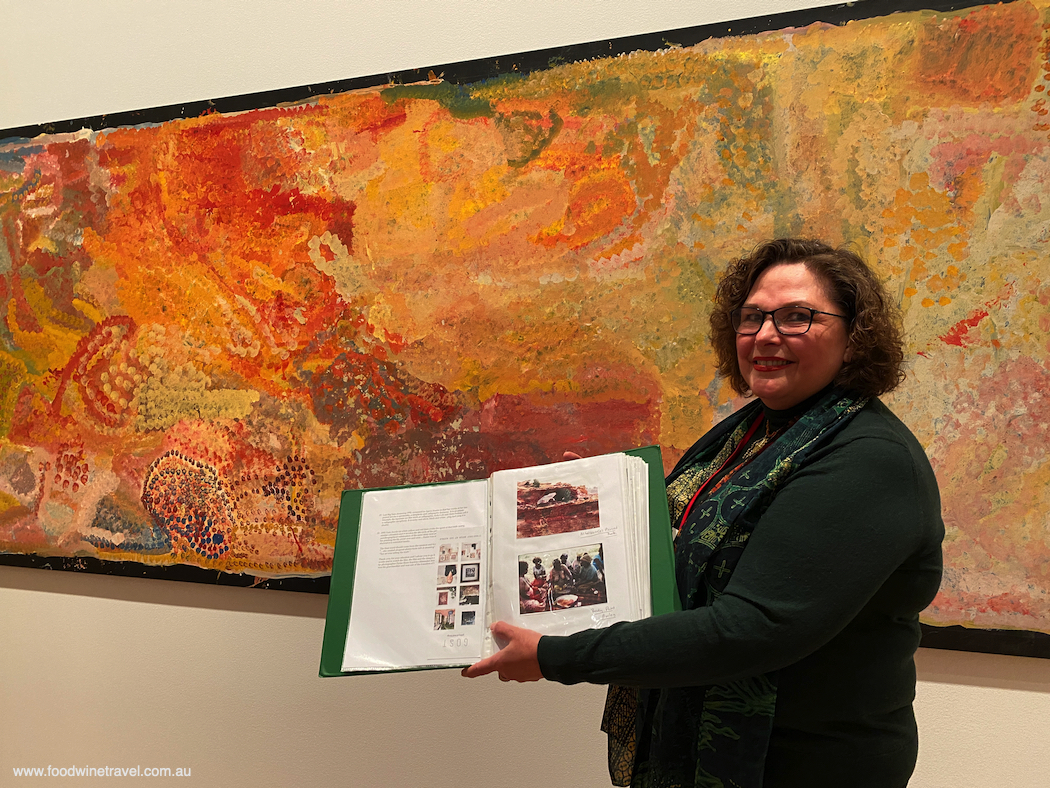
Julia’s specialty is Asian art but her passion for the late Kam Kngwarray’s work is obvious. “For me, this is the Cosmos,” said Julia of one luminous painting. “That’s how it speaks to me. The colour and the light are glorious.” Julia has a keen interest in textiles so Kam’s earlier works, which were done on batik, resonate with her on many levels and not just because the art form came from Indonesia.
“Why batik and why tie-dyed in 1977? Well, it was kind of trendy at the time. Indonesians had a unique connection with Utopia / Central Australia (where Kam Kngwarray lived and worked),” she said. One work made using the Indonesian batik technique demonstrates just how labour-intensive the process is.
“Kam is using four colours here: white, yellow, green and aubergine, then crackling the wax, then you have to boil the cloth and dry it.” Nothing escapes Julia’s eagle eye. “You can see on this one that the silk was dried on a barbed wire fence as there is a little tear in the top right-hand corner where it caught on the barbed wire.”
Women’s ceremonies
Julia explains how all the designs, in batik and in Kam’s later works on acrylic, represent awely (women’s songs and ceremonies). “The name ‘Kam’ means ‘I am the seed, the seed of the pencil yam’, which is her dreaming story.”
When Kam’s style progressed from dots representing the pencil yam to the striped paintings that won her international acclaim, “everyone said she’d changed her style. She didn’t change her style,” said Julie. “The stripes are the women’s body paint. This is women’s business — it’s a lifetime of painting on sand, on body, on batik, on acrylic.”
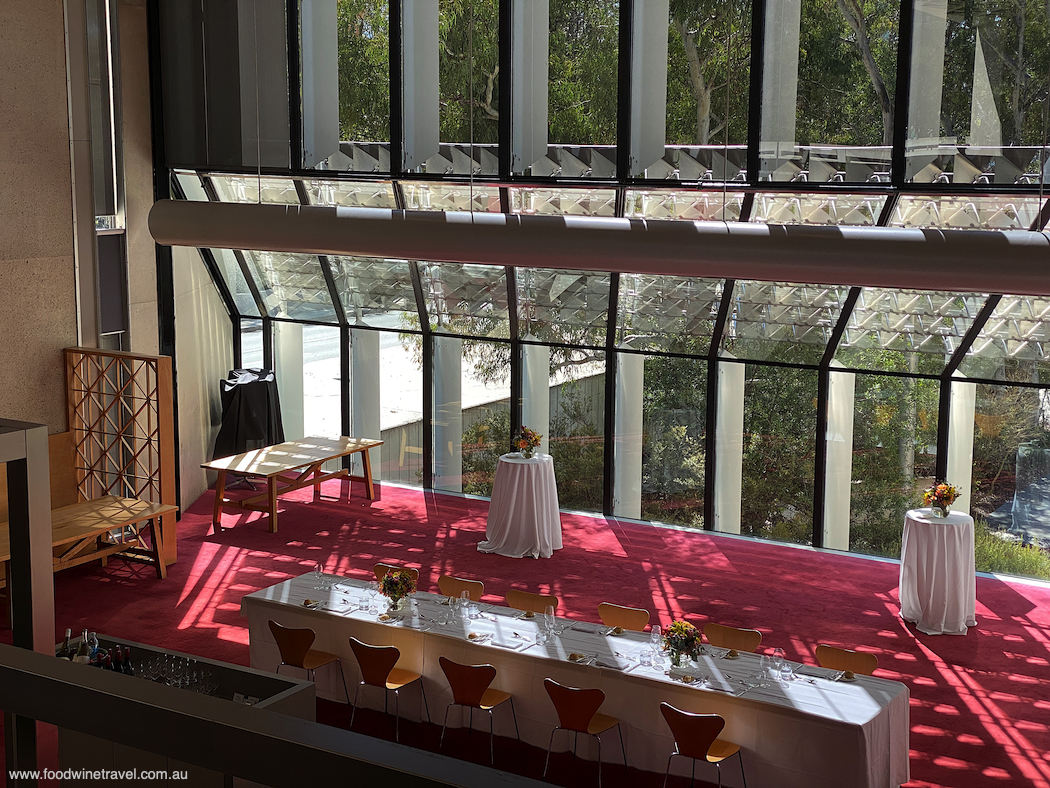
The National Gallery is home to the world’s largest collection of Aboriginal and Torres Strait Islander art, along with other Australian art, Asian and Pacific art, and modern art from around the world, particularly Europe and America.
Our tour group was so engrossed that we had time for only a few other gallery highlights before enjoying a beautiful lunch in a gorgeous light-filled space. We had to see Jackson Pollock’s Blue Poles, purchased by the gallery amidst much controversy in 1973. Given a clean during Covid, it has been re-hung with new lighting.
“It’s heavenly,” says Julia of the new display. “Like Emily (Kam Kngwarray), Jackson Pollock built the colour up. He called it active painting. He did it on the ground; it’s quite rhythmic. You can see his footprints in the cream part at the bottom of the painting. He sometimes used a turkey baster and at one stage the turkey baster broke and there are bits of glass in the painting.” I’ve seen Blue Poles many times but never noticed that before.
The National Gallery’s signature experience can be tailored to whatever exhibition happens to be showing at the time. Ever Present: First Peoples Art of Australia returns to the gallery in August after a national tour. The soon-to-open major exhibition, Gauguin’s World: Tōna Iho, Tōna Ao, will be on display from June 29 to October 7.
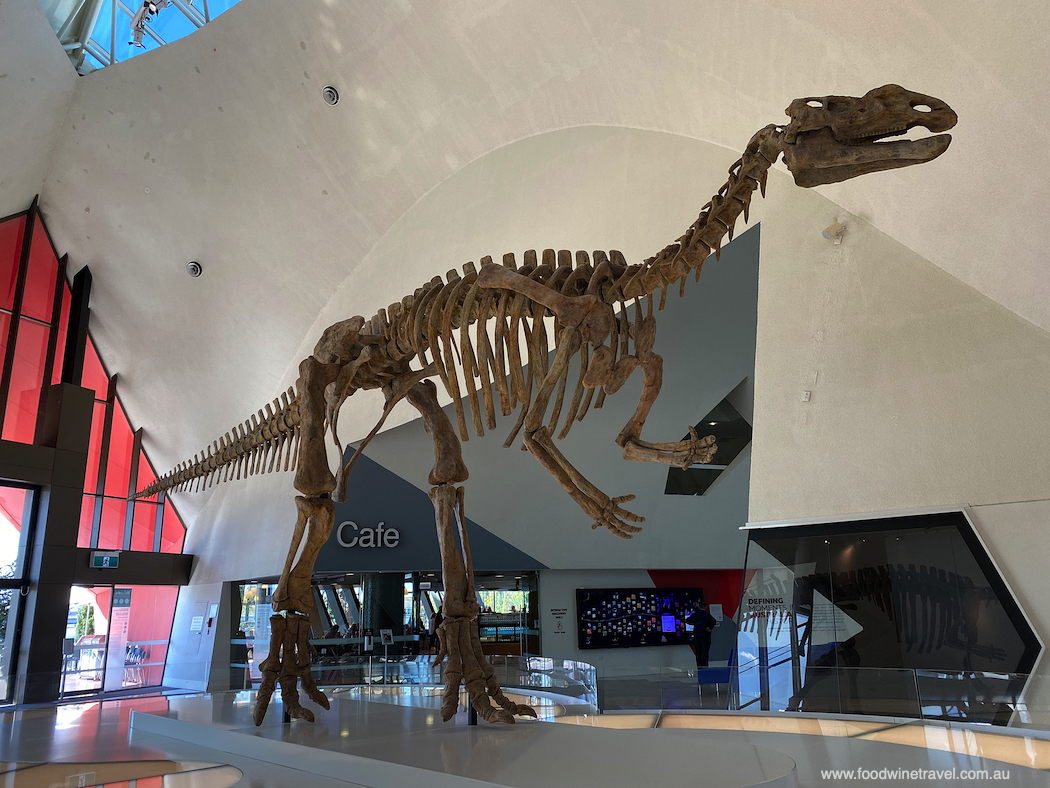
Over at the National Museum of Australia, the Ultimate Museum Experience is also followed by lunch, this time on the deck of the museum café overlooking Lake Burley Griffin. Interestingly, just about every wine on the list is from the Canberra region, a big difference from years gone by when venues weren’t brave enough to be so parochial. But Canberra wineries have earned their stripes and there’s now more pride in that too.
In the museum atrium, alongside the replica of a muttaburrasaurus skeleton found in Queensland, we meet curator Suzanne Gibson for a private tour. From a gordian knot in the centre of the building, a 30-metre-long bright orange line curls like a rollercoaster before ending, conceptually, at Uluru.
Opened in 2001, the museum is a striking building, constantly undergoing change. Interpretations of history don’t stand still. The Landmarks gallery, relating to the period since 1788, is closed for renovation with plans to re-open later this year. The Great Southern Land Gallery opened in September 2022, inviting us to experience, in Suzanne’s words, how “land shapes us and we shape the land”.
Breathing Space
Outside, there’s been a lot of work done in the museum’s Garden of Australian Dreams, including an audio journey called Breathing Space. Created by Genevieve Lacey, it’s an extraordinary work with owl, koala and possum calls, the clicking of cicadas, frog calls and whip birds, indigenous songs and whispered words. Even museum staff haven’t heard it in its entirety, since the soundtrack changes every day.
A mound in the middle references Central Australia, with a nod to the dingo fence and surveyors’ marks. Suzanne points out Italian elder trees planted “because they lean in, just like the migration of people who lean in to Australia before leaning out”. Blue poles are a reference to the National Gallery’s famous painting. A concrete structure with a small pool echoes the Australian love of a house on a quarter acre block with a pool.
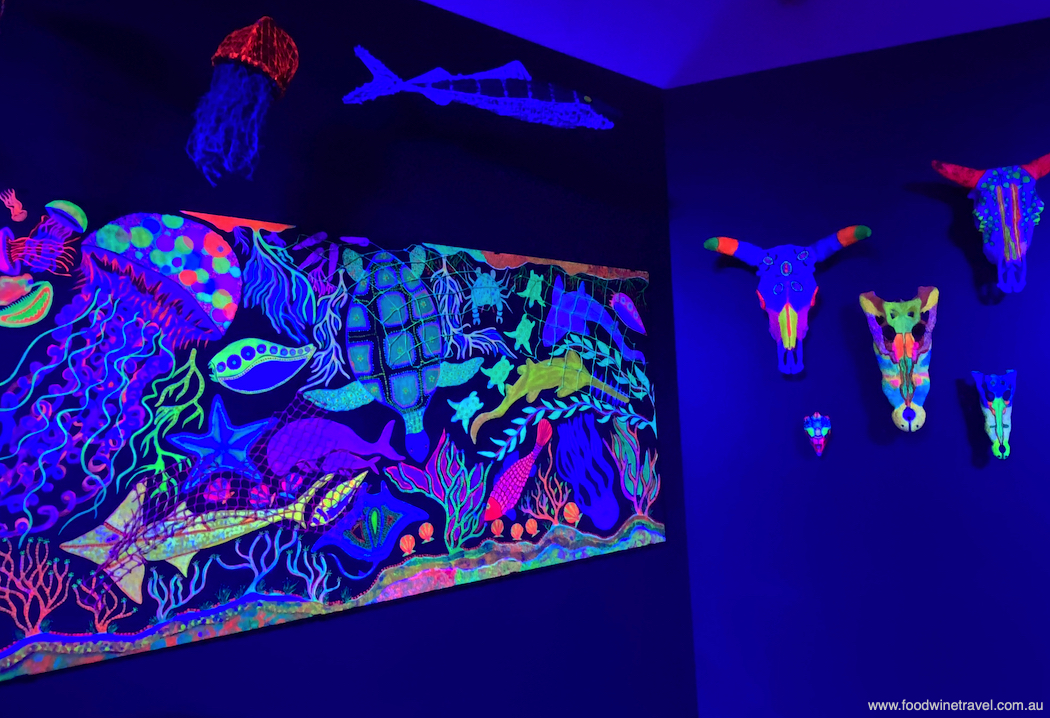
A covered walkway leading to the Gallery of First Australians feels like being in a cloister, not least because the soundtrack, with First Nations people singing gently, sounds almost liturgical. Stepping inside, Suzanne describes the Talking Blak To History exhibition as a “more contemporary way of thinking and interrogating First Nations history”.
It’s time to confront hard truths. Suzanne points out a gate which was part of the Kinchela boys’ home near Kempsey, where 400 indigenous boys were sent between the 1920s and the 1970s. “Particularly in this home, it was brutal,” she said. “They were physically abused; some were sexually abused. They were told their families didn’t want them. They weren’t fed enough. Some were very young.”
Balarinji acrhive
John Moriarty is one who showed the strength of coming through that system. Along with his wife, Ros, he established the Aboriginal design studio, Balarinji, in 1983. With commissions from government, corporate and celebrity clients around the world, the company’s distinctive Indigenous designs have appeared on objects ranging from posters to Qantas planes.
“We have a whole Balarinji archive, so the displays are swapped periodically,” said Suzanne. A Qantas uniform designed by Peter Morrissey with a Balarinji-designed fabric is on display during our visit.
Suzanne tells the stories behind many of the paintings on display, including an enormous work, Ngurrara 1, painted in 1996 in preparation for a native title claim over the Great Sandy Desert. The museum has more than 200 Papunya paintings and artefacts in its collection.

Themes of Country, Land, and Change are canvassed in the Great Southern Land Gallery, which is entered through a column of bunya trees made from resin. Around 150 million years ago, these imposing trees proliferated on the Australian continent. Suzanne points out a huge chunk of coal, “the embodied energy of the ancient Bunya pine … There are lots of things that can tell a powerful story, and as a social history museum we’ve got the freedom to do that. All life in a place is interrelated.”
Another exhibit tells the story of the Yuin people of Twofold Bay, who relied on orcas to drive humpback whales to shore so that the Yuin could hunt them for food. “The orcas were rewarded with mouths and lips, the only part of the of the whales that they were interested in,” said Suzanne. The gallery, she says, is “really a deep dive into our relationship with the environment. At the end of it, we ask people ‘what are places you care about?’”
Some undertake the Cultural Attractions of Australia experiences because they have a connection with a particular attraction. Parliament House, for example, attracts many visitors involved in the planning and construction of the building which opened in 1988.
“Ten thousand Australians worked on the site but 40,000 Australians contributed to it in some way so it’s not just a building, people have a connection with it,” said volunteer guide Rosemary (“Rosie”) Bruce, her surname aptly the same as that of a former Prime Minister.
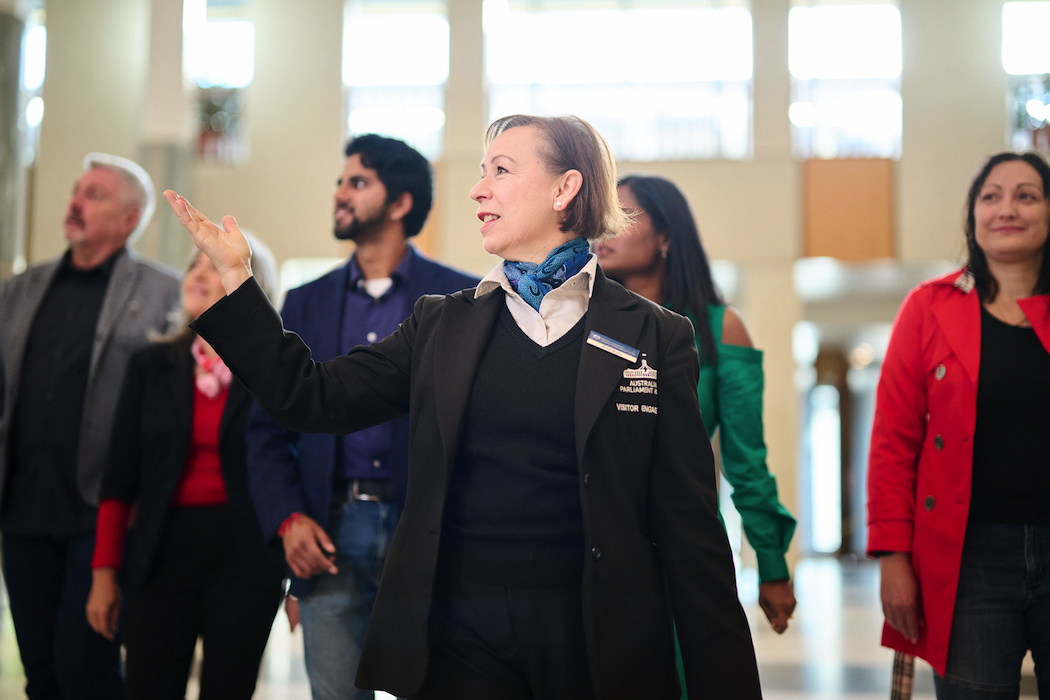
Architect Romaldo Giurgola and his design team, Mitchell/Giurgola and Thorp, left an incredibly legacy that remains true to his original vision. Not that he was hung up about changes to his design: he reportedly said that once he walked away from the project, it belonged to the people of Australia. Giurgola came to love Canberra so much that he made it his home.
The Signature Tour experience provides an in-depth look at the public areas of Parliament House as well as behind-the-scenes access to parts that visitors don’t normally get to go. The tour includes an elegant high tea in the Queens Terrace Café, complete with locally made bubbles (Gallagher, if you’re wondering).
After an early morning start and an airport-level security check, we meet Rosie inside the main entrance, near the grand Carrara marble staircase. We do a double take when a dad walks by with a young kid carrying a school bag. He’s off to daycare, a facility that current Prime Minister Anthony Albanese can take credit for.
Rosie is an engaging guide who brings humour to the tour. She says that imperfections in the 300-million-year-old black limestone are fossils, and we’re invited to look for Shaun the prawn. With a bit of help we quickly spot Shaun, a tiny creature that does indeed look like a prawn.
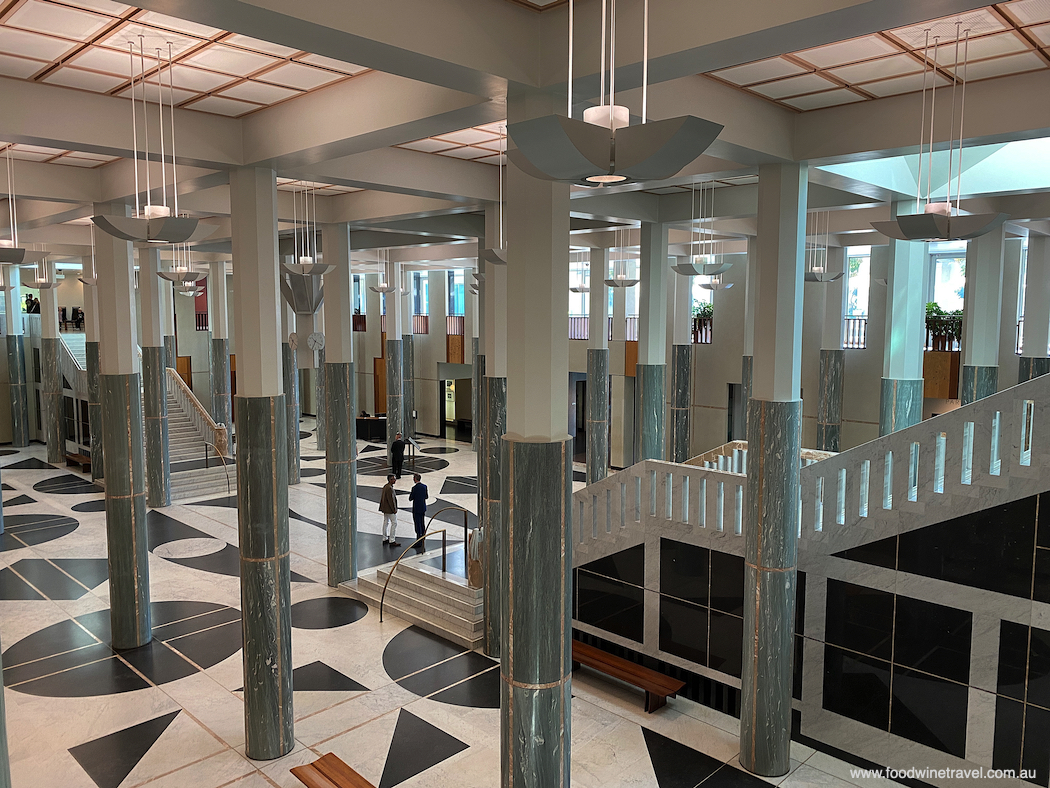
Even in the Great Hall, a place I have visited many times, I see things I haven’t noticed before – like Halley’s Comet in the enormous tapestry designed by late artist Arthur Boyd. The comet becomes a reference point for dates: it also appears in the Bayeux Tapestry.
Behind the scenes, we see the painting that the Great Hall tapestry is based on, itself so big that Boyd had to make an opening in the wall of his Bundanon studio to carry the painting out. I had visited Boyd’s studio near Nowra some years ago where I saw the said opening (now a window). And so stories go around in circles, like they always do.
Passing portraits of former prime ministers lining the Members’ Hall at the heart of the building, Rosie explains the parliamentary process. “We try to bring it alive,” she says. Taking an elevator up to the grassy slopes surrounding the 81-metre-high flagpole, Rosie explains how Giurgola designed the grassy roof to be symbolic of a government never being above the people. Pre-9/11 you could access the roof from outside and locals often swung by to roll down the grassy slopes, but it’s a different world now.
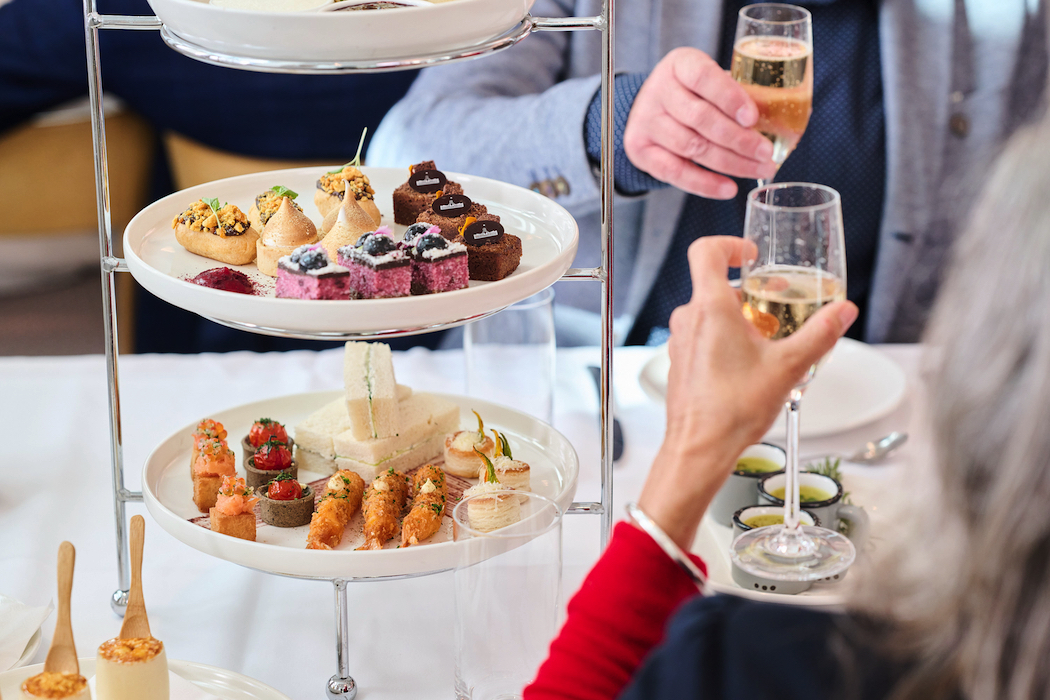
We’re staggered to learn that Parliament House has 4,500 rooms and 22 kilometres of corridors, although once we head behind the scenes we begin to appreciate its enormity. Basement corridors leading to all the ancillary services such as kitchens, printing and the mail room, are such a labyrinth they were given street names so that people could find their way around.
We stroll through meticulously maintained courtyards, look down a corridor towards the Prime Minister’s office, admire beautiful and interesting artworks from a 6,500-strong collection, walk in hushed tones past ministerial suites, and see where the media gathers when a spill is about to take place. In this bastion of Australian democracy, Rosie deftly explains it all.
Volunteer guides
At the Australian War Memorial, the mood is more sombre when we meet Henry Moulds outside Poppy’s Café. He’s one of a hundred volunteer guides who have, according to manager of visitor services Gerard Pratt, “a genuine passion for this place. None of the tours are scripted. We are blessed to have guides like Henry.”
For his part, Henry says he’s been leading tours for seven years “and every now and then I still get halfway through it all and get emotional”. It’s at about this point that we’re standing at an installation titled As of today… with 47 marble flags representing the 47 people who lost their lives in Afghanistan. Sadly, four of the 47 took their own lives.
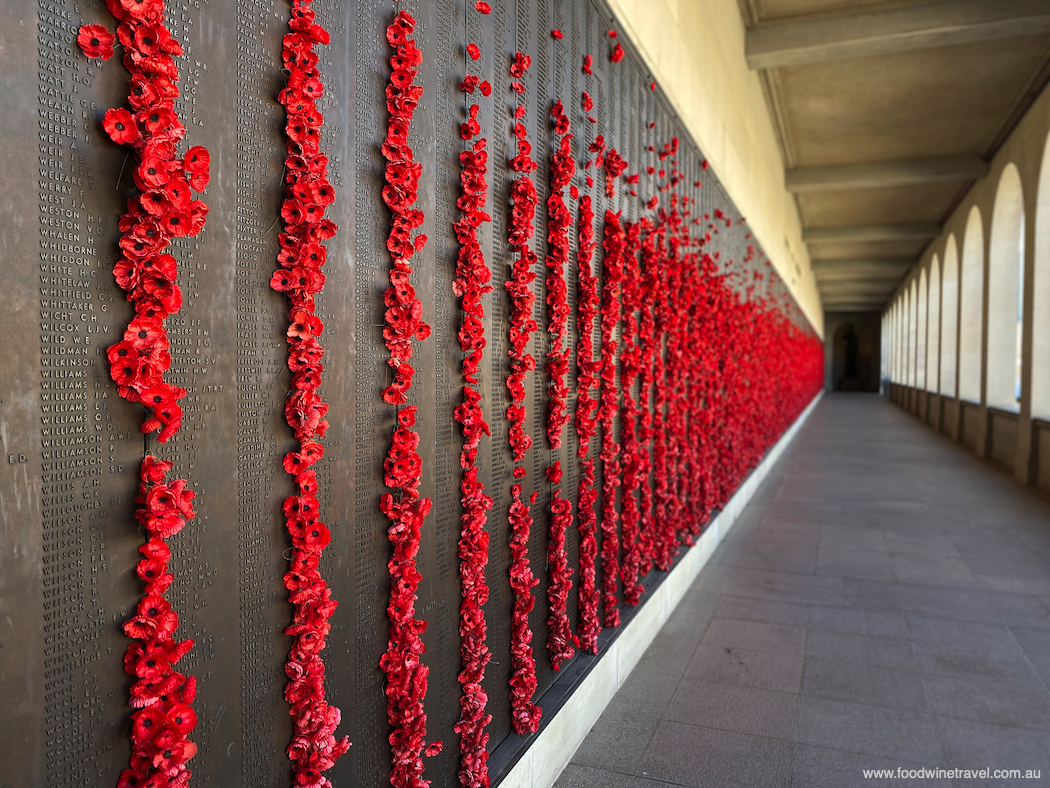
During this Soul of the Nation tour, we hear stories of service and sacrifice behind the 103,000 names on the Australian Roll of Honour, pay our respects at the Tomb of the Unknown Australian Soldier, and hear stories of courage and mateship in the galleries devoted to conflicts Australians have served in.
But a special experience is meeting one of the curators who has assembled a collection of diaries and letters for our private viewing. Jennie Norberry, manager of information services in the Memorial’s research centre, has dug out correspondence relating to legendary ANZAC Private John Simpson Kirkpatrick (‘Simpson and his donkey’). One of the letters was from Simpson’s sister Annie expressing her concern at the men being “fodder for the guns”, unaware that he was already dead. Gut wrenching. With notice, the curators can assemble memorabilia relating to a family member or the unit they served in.
The War Memorial is undergoing a huge expansion and like many Australians, I’m concerned about its high cost, a lack of recognition for Australia’s Frontier Wars, and a politically driven agenda to turn it into a museum rather than the memorial it was intended to be.
Yet it remains the one place where you really dig deep to reflect on being Australian. Nowhere is this more so than at the Memorial’s Last Post Ceremony, held every day just before the Memorial closes for the day. Each ceremony honours one person from the armed forces who paid the ultimate price. As Gerard Pratt says, “We have enough names to tell stories for 270 years.”
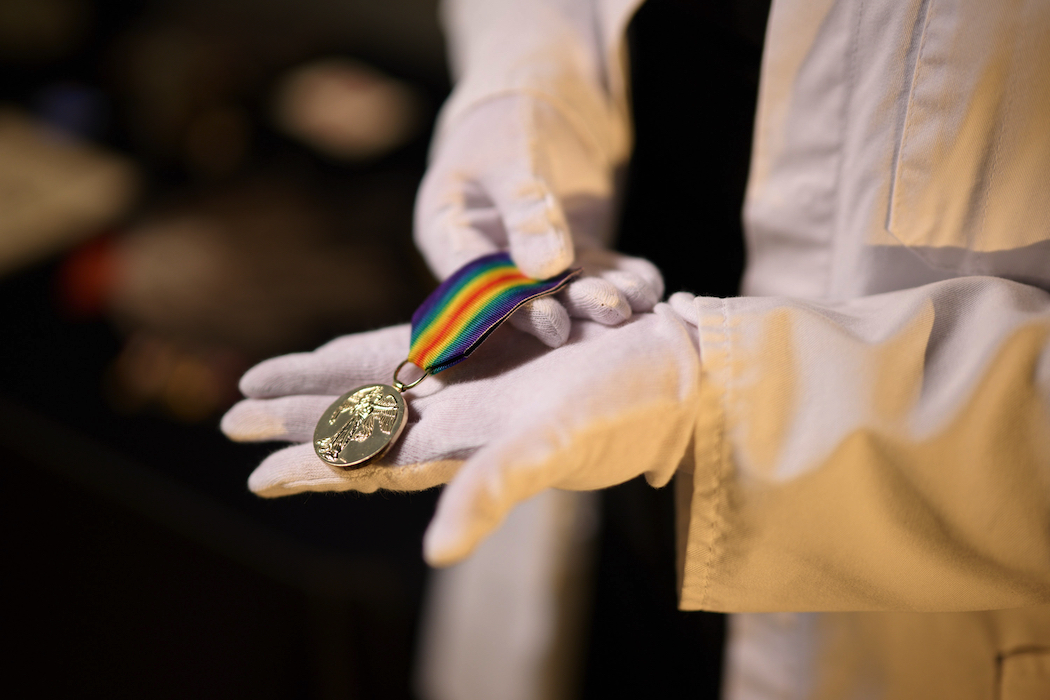
Anyone can attend the ceremony but visitors on a curated tour are invited to write a card and lay a wreath near the Pool of Reflection. This was the greatest honour and if I wasn’t weeping before, I certainly was now for my husband’s three great uncles who served in World War 1 and never made it home.
I’ve always wondered why more visitors don’t put Canberra on their itinerary. For Australians, it deserves to be more than just a high school excursion. For visitors from overseas, these experiences are a unique opportunity to understand how our country ticks.
Canberra is not soulless. It’s the nation’s beating heart.
Christine was hosted by Cultural Attractions of Australia for these four signature experiences. If you would like to read more about the experiences on offer, visit culturalattractionsofaustralia.com For information about Canberra, go to visitcanberra.com.au

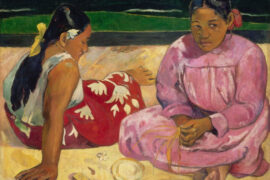
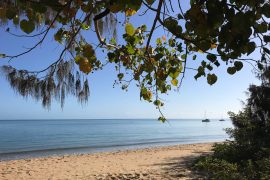
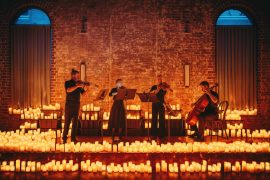
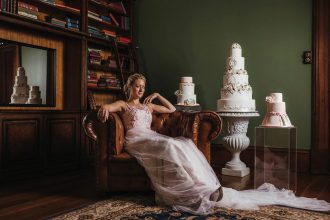
Christine and Maurie
Thank you for this wealth of information about our nation’s capital, based on your own thorough research. I’ll send the link today to my Airbnb guests in the city, who have already told me how they’re loving their Canberra trip. (I think they’re quite surprised!). I’ll put a printed copy in my Guest Guide for all my future guests.
With my warmest wishes on this chilly winter day
Michele (Bolitho)
Thanks Michele for your kind words. That’s so sweet of you to include our story so that your guests can discover what Canberra has to offer. Glad your current guests are loving it.